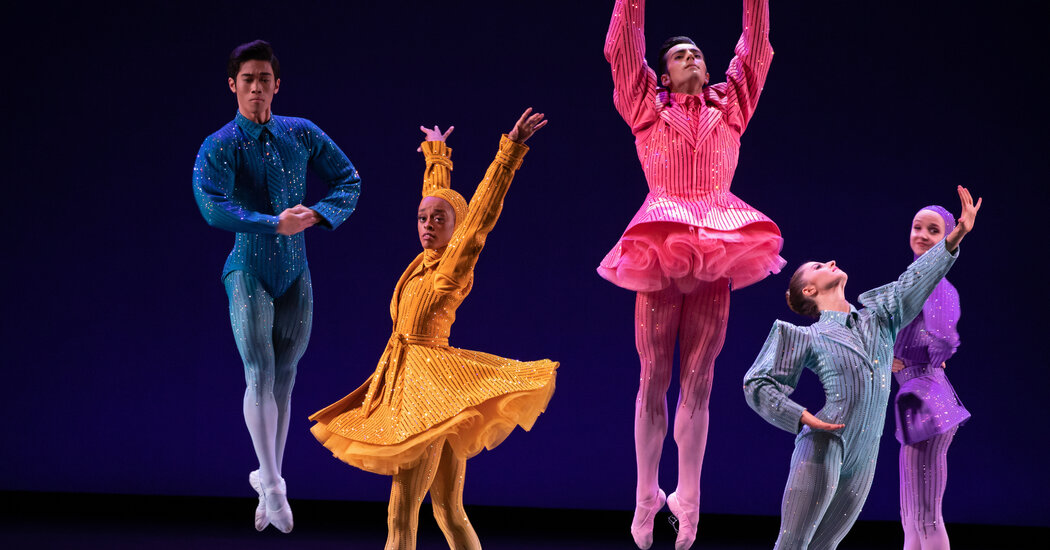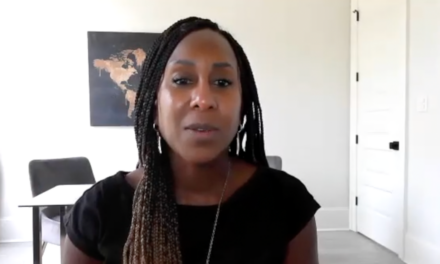
The company has rebounded after the pandemic and a series of scandals, stabilizing its finances, revamping its culture and attracting younger audiences.
The leaders of New York City Ballet filed into a banquet hall at Lincoln Center one day in the spring of 2022 for an urgent meeting.
The organization was in an uncertain position. It had lost about $55 million in ticket sales during the pandemic shutdown, and as cultural institutions reopened that season, there was no guarantee that audiences, or donors, would return in force. The company was still working to recover from a series of scandals, including accusations of abuse against a former ballet master in chief and an outcry over vulgar texts sent by male dancers. And the nationwide reckoning over racial injustice had brought fresh attention to the dearth of people of color on and offstage in ballet.
At a daylong retreat inside the David H. Koch Theater, the company’s longtime home, City Ballet’s board, staff and artistic leaders began to map out a strategy.
They would keep a heavy focus on George Balanchine, the company’s co-founder, while commissioning more works by living choreographers; they would redouble efforts to recruit Black, Latino and Asian artists and overhaul the company’s work culture; and they would continue to work to attract younger audiences in part by collaborating with pop-culture figures and investing in digital marketing.
“We came away with a mantra: We have to be excellent,” said Diana Taylor, the chair of City Ballet’s board, who organized the meeting. “And everything else comes under that.”
Hit hard by the pandemic and other crises, City Ballet has led a spirited revival ahead of its 75th anniversary season, which begins this month, stabilizing its finances, revamping its culture and attracting new audiences.
While many cultural institutions have scaled back during the pandemic, City Ballet is growing: Its budget for the fiscal year that ended in June was about $91 million, compared with $88 million before the pandemic. Contributions and grants have risen sharply, totaling about $30 million last year, compared with $26 million in 2019.
Audiences were back at prepandemic levels last season, with attendance at 73 percent of capacity. And in a shift, the number of young people has increased: The median age of ticket buyers has dropped to 44, from 54 in 2008, and more than half are under 50, compared with roughly a third in 2008. (The Metropolitan Opera and the New York Philharmonic’s attendees, by comparison, still skew older, with the average age in the 50s.)
A new generation of dancers and choreographers has brought fresh energy, as have splashy premieres, including a recent collaboration with the pop star Solange Knowles.
“There’s an excitement and a drive,” said Selena Light, a 23-year-old employee at a technology company, who last season attended her first performance at the ballet, a premiere of an evening-length work set to some of Aaron Copland’s most popular music by Justin Peck, City Ballet’s resident choreographer.
“Especially after going through all the darkness of Covid,” Light added, “dance and ballet feel more relevant and alive.”
The company’s more than 90 dancers have sensed a shift as well.
Megan Fairchild, a principal dancer who first joined the company as an apprentice in 2001, said that a few years ago, when City Ballet’s scandals dominated the conversation, working there could feel like “watching an institution that we all very much cared about getting dragged through the mud.”
The pandemic was another setback, Fairchild said, but it also brought the company closer. “It was a difficult transition,” she said, “but we’ve all evolved.”
As City Ballet begins a new chapter, many challenges remain. Government aid that helped sustain the company during the pandemic has dried up, and subscriptions, once a major source of revenue, have dwindled. Audiences remain unpredictable, and recent economic jitters could make fund-raising more difficult.
“I’m not sure we’ve reached a steady state yet, but it’s certainly on the upswing,” said Katherine E. Brown, City Ballet’s executive director. “There’s a lot of optimism. But there’s still anxiety.”
Only a few years ago, City Ballet’s success was far from assured.
In 2018, Peter Martins, the company’s powerful ballet master in chief, stepped down amid accusations of sexual harassment and physical and verbal abuse. That same year, the company fired two principal male dancers, Zachary Catazaro and Amar Ramasar, after they were accused of inappropriately sharing vulgar texts and sexually explicit photos of female dancers. The scandals roiled the company and became high-profile tests of the #MeToo movement.
City Ballet’s leaders vowed to take action, but the company struggled to move on. Martins, who ran the company for 35 years, continued to exert influence after his resignation, angering some dancers. And in 2019, an arbitrator ordered the company to reinstate Catazaro and Ramasar, alienating some women in the company.
Then the pandemic hit, forcing City Ballet to cancel hundreds of performances, disrupting the careers of many rising stars and delivering a financial shock. City Ballet, like other cultural institutions, reduced the salaries of dancers and other artists as it worked to weather the crisis.
When live performance returned in the fall of 2021, there was relief and excitement, as well as questions about the company’s future — how it should balance traditional fare with contemporary works, for example, and use technology to draw new audiences.
The company made targeting young people a priority, building on the success of prepandemic efforts. A program that offered $30 tickets to people between the ages of 13 and 30 surged in popularity during the pandemic. And the company’s art series, in which visual artists install large-scale works at the Koch Theater, continued to attract newcomers to dance. City Ballet also expanded its presence on Facebook, Instagram and other platforms, taking users behind the scenes of productions like “The Nutcracker” and posting interviews with dancers about their lives outside of ballet.
Taylor, a finance leader and the partner of former New York City mayor Michael R. Bloomberg who, in 2021, became the first woman to serve as board chair in City Ballet’s history, worked to galvanize donors. When a potential board member expressed concern about joining “my grandmother’s dance company,” Taylor assured her that City Ballet was not beholden to the past, noting premieres by Peck and others.
“Our challenge is, how do we keep up with current trends and current tastes while not sacrificing who we are and what we’re trying to do?” she said. “Balanchine was a great innovator in his own time. Innovation is good, but we also need to keep the excellence in everything that we’re doing.”
The company increased the annual amount required to join the board to $150,000 from $100,000. Donations rose significantly; the spring gala this year, which was attended by Bloomberg, took in $3.5 million, breaking records.
As the financial picture improved, City Ballet worked to make its culture more collaborative and inclusive.
The company has put in place better protections for dancers, instituting a code of conduct and hiring an intimacy director to care for the physical and emotional well-being of performers.
While the company was once known for a “fear-based work ethic,” said Jonathan Stafford, City Ballet’s artistic director, it has tried to give dancers more of a voice, meeting with them more regularly and offering more frequent feedback.
“We tried to be proactive,” he said. “We tried to think through, what does this company need right now? What do these artists need right now? How do we need to be as leaders? How do we need to treat people? How do we need to communicate with people? The company was pretty siloed for a long time. There was not feedback for dancers, there were not ways forward to improve or to know what was expected of you. We’ve tried to fill in all those gaps and offer more resources for physical health, well-being and recovery.”
Wendy Whelan, the company’s associate artistic director, said the administration had tried to get to know its dancers at a deeper level.
“We’re looking at the whole dancer,” she said. “It’s not just their body, their technique, but their mind, their spirit — everything.”
The national discussion over race has increased pressure on City Ballet to bring more diversity on and offstage. The company dance corps remains predominantly white, as do its audiences, but there have been signs of progress.
The company has hired more Black, Latino and Asian dancers in recent years and promoted them to key positions. As parts of its most recent labor contract with the union representing the dancers, the company formally adopted a policy allowing dancers to use tights and shoes that better match their skin tone, rather than standard pink attire. The company has also pledged to work to eliminate racial and ethnic stereotypes in ballet.
Programming has grown more diverse, featuring a greater array of choreographers and composers, helping draw new audiences to the ballet. In February, City Ballet presented “Fortuitous Ash” by the Thai American choreographer Keerati Jinakunwiphat, her first work for a ballet company. Last fall, City Ballet premiered “Play Time,” by the choreographer Gianna Reisen, with an original score by Solange. About 70 percent of ticket buyers for that program had never been to City Ballet before. The renowned choreographer Alexei Ratmansky, who spent the past 13 years at American Ballet Theater, recently joined City Ballet as artist in residence, a coup for the organization.
As the 75th anniversary looms, the company still faces challenges: the uncertain economy, increasing competition from streaming platforms for time and attention from audiences, and questions about its modern artistic identity as the Balanchine era grows more distant.
Peck, the choreographer, said it could become more difficult to keep staples of the repertoire “sharp and clear and potent” as the connection to Balanchine and Jerome Robbins, one of the company’s most influential choreographers, faded.
City Ballet is like a garden that “we have to continue to work on day in and day out, regardless of any success that we’ve had,” Peck said.
“Each year, it feels like we are always starting over again, as if it’s the first time,” he added. “If we don’t stay on top of it at all times, the weeds will overtake it, and it will lose its clarity and its order.”




